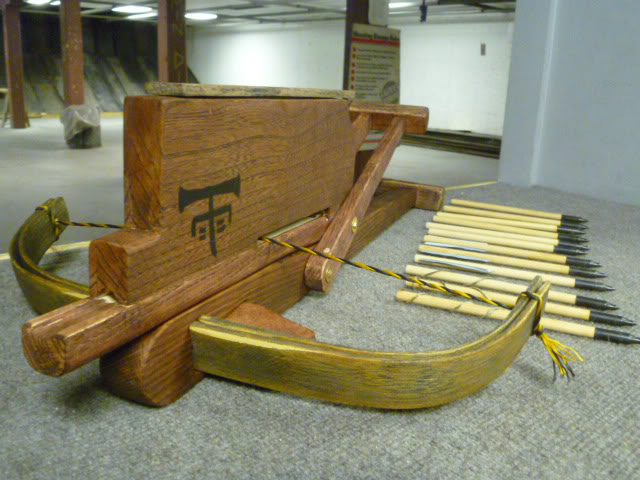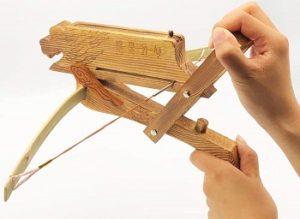

The main draw back to the Chinese was the inability to cut a deep groove in the front to accommodate a downward pointing fletch.(Doing so would just expose or hit the front fork.) That meant that I had to use 2, 180 degree fletchs or use 3, with two at 180 and one at 90. ( Classic roller nut and my own modern type with a hammer). But I was disappointed with it as compared to the other two types. I was looking forward to the Chinese type because it's elegant design intrigued me. As I posted here before,(Universal Standard Crossbow Nut) I recently built three different trigger types and tested them all back to back. Hi Guys, I thought I would show my latest project. » need help contacting le musee Dauphinois Grenoble » Skane/Lillohus lockbow information needed » 400lb Windlass crossbow bolts weight and accuracy shooting high. » prod angle, and lever trigger for sale anyone? E-foiling the ability to fly while staying grounded.» Questions around heavy crossbow lath buildin.The Top Six Reasons Why You Should Be Playing Board Games as an Adult.The actual detail that goes into the design and assembly of the crossbow is what gives this weapon it's uniqueness.Īnyone who has fired the Chu-ke nu and realized how fun it is, usually asks the same question: "Where can I get one?" ScanzonCraft, makers of fine wood products, in association with have answered that question - THEY do! In conclusion, the Chinese Repeating Crossbow, often called the Chu-ke nu, has been around for a long time. This is not so! Once they have been exposed to how fast it can fire, the fun begins. Other people who first fire one will do it slowly, thinking that it needs time to load the next bolt. You can load 6 to 7 bolts, and the firing mechanism is just "push forward and pull back". What I like about firing the miniature Chinese Repeating Crossbow is the sound and feel of the bolt leaving the chamber. Because of the rapid fire mechanism of the Chu-ke nu, it was used as the "first strike" defense in close combat situations.


The warriors would line up and fire multiple bolts at riders on horseback as a fist strike. In China, the crossbow revolutionized the war. So even if an enemy were to be hit by a bolt, and not suffer a mortal wound from the bolt itself, the poison would work it's way into the bloodstream and inevitably end their life with a "slight delay". This rapid firing design is why it was so impressive.Įven though it has a short range, the owner of the weapon would dip the bolts into poison. Everyone seems to be impressed by it's mechanism and ease of firing. It was introduce to the Koreans in 1418, and was given the name "sunogung". The weapons were very common among the Manchurian troops, and can be seen in photographs from that era. You can see it spelled a couple of different ways or "Chu-ke nu" or "Chu-ko-nu", the first being correct. It was named after Zhuge because of his improvements. This new design was able to fire multiple arrows (bolts) in succession, was last used in mass formations which helped shape the China-Japan war of 1894. Online research shows that it originates to the 4th century.Ī very famous Chinese strategist, Zhuge Liang (226-481 AD) is believed to have "upgraded" an earlier design from a tomb dating 4th Century BC.


 0 kommentar(er)
0 kommentar(er)
